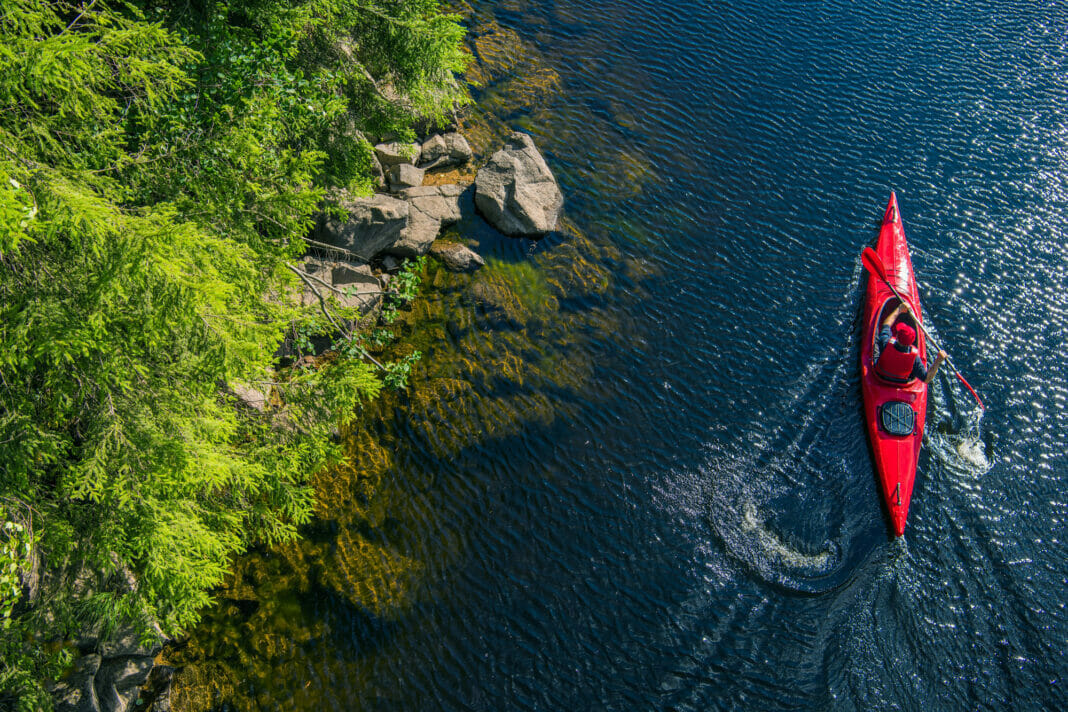Anchoring is an essential skill for kayakers and canoeists, whether you’re fishing, bird watching, or just enjoying the scenery. It allows you to stop and stay in one place, giving you time to explore or rest. But anchoring in a small boat like a kayak or canoe can be challenging, especially if you’re not familiar with the basics. In this article, we’ll cover the fundamentals of anchoring in a kayak or canoe.
Choosing the Right Anchor
The first step in anchoring your kayak or canoe is choosing the right anchor. There are several types of anchors to choose from, including:
- Folding anchors are compact and lightweight, making them easy to store and transport. They’re also versatile, as they can be used in various types of bottom, but they may not hold as well as other types of anchors in heavy wind or currents.
- Mushroom anchors are similar to folding anchors, but they have a broader fluke, which can hold better in soft mud or sand bottoms. However, they tend to be heavier and bulkier than folding anchors.
- Danforth anchors have a flat fluke that provides good holding power in sandy or muddy bottoms. They’re also lightweight and compact, making them easy to store and transport. However, they’re not as versatile as other types of anchors, and they may not hold as well in rocky or weed-covered bottoms.
- Fluke anchors have a pointed fluke that provides excellent holding power in rocky or weed-covered bottoms. They’re also easy to set and retrieve, but they tend to be heavy and bulky, making them difficult to transport and store.
Setting up an Anchor System
Once you’ve chosen the right anchor for your kayak or canoe, you’ll need to set up an anchor system. This typically includes an anchor line, a cleat, and a float. The anchor line should be made of braided nylon or polypropylene, as it’s strong and durable, but also flexible and easy to handle. The cleat should be securely attached to the bow or stern of your kayak or canoe, so you can tie off the anchor line. The float is used to mark the location of your anchor and to keep the line from getting tangled in the propeller.
Techniques for Placing and Retrieving an Anchor
When it comes to placing and retrieving an anchor, there are several techniques to keep in mind.
Placing the Anchor
Before placing the anchor, find a suitable location. Look for a spot that is protected from wind and waves, and where the bottom is firm enough to hold the anchor. Once you’ve found the right spot, slowly lower the anchor to the bottom, making sure the fluke is facing down. Pay out the anchor line as you go, keeping a close eye on the float to make sure it doesn’t get tangled.
Retrieving the Anchor
When it’s time to retrieve the anchor, slowly start to pull in the anchor line, keeping a close eye on the float to make sure it doesn’t get tangled in the propeller. Once the anchor reaches the surface, lift it out of the water and carefully remove any debris or weeds that may have become entangled in the fluke.
Final Thoughts
Anchoring in a kayak or canoe can be a great way to enjoy the outdoors, but it’s important to be prepared and to have a basic understanding of the basics. By choosing the right anchor, setting up an anchor system, and using proper techniques, you can safely and effectively anchor your small boat and enjoy your time on the water.


